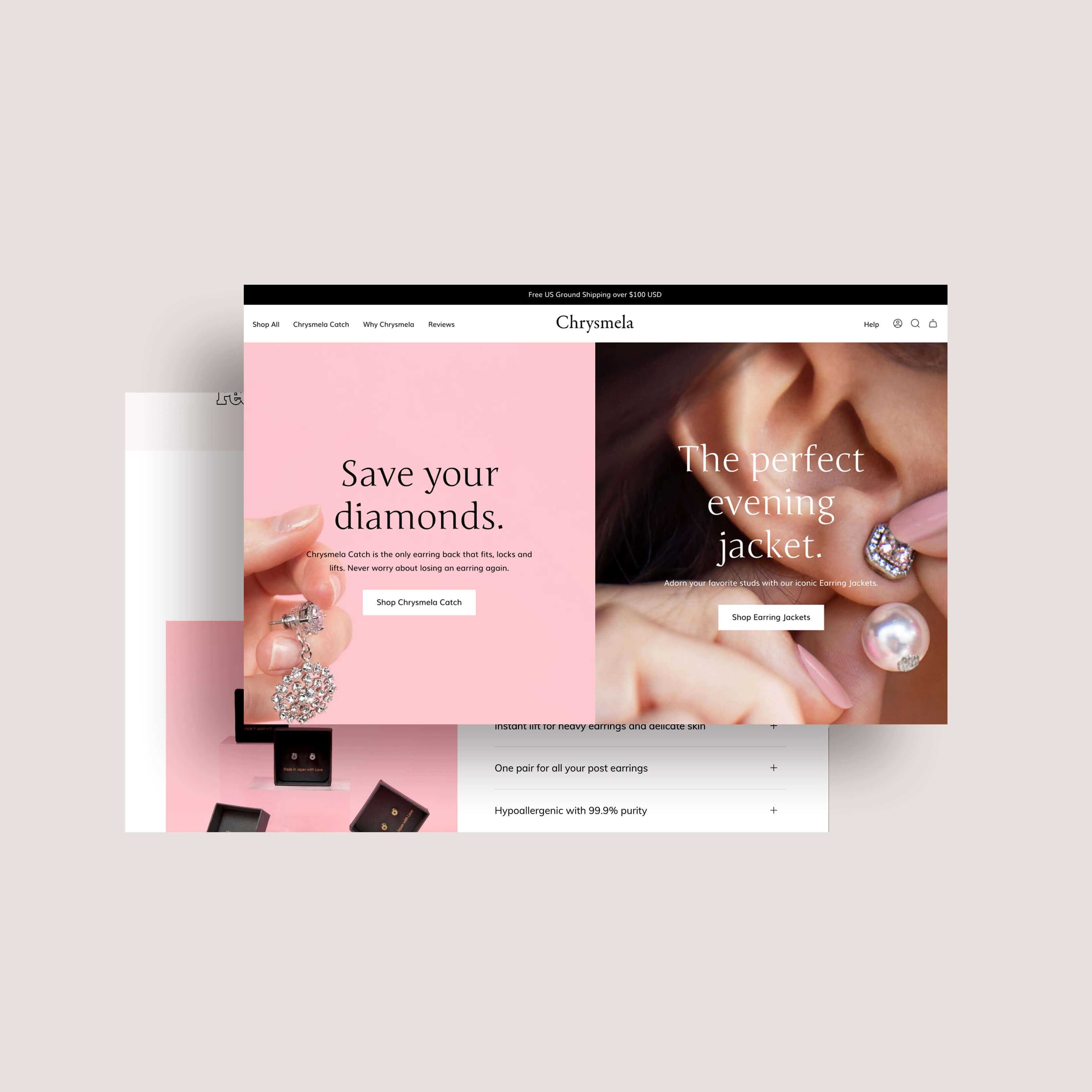Photo Credit: Gabrielle Henderson
An Introduction to the Best Shopify Themes for Luxury Brands
In this series, we’ll be reviewing some of the best themes available for luxury brands on the Shopify Theme Store.
We’ll take a deep dive into each theme’s design, highlighting the features and functionality that work well for high-end brands as well as any pitfalls to avoid. We’ll also review each theme from a technical standpoint, evaluating code quality, performance and accessibility.
Skip to Review #1: Prestige
But first, you may be wondering:
Why don't brands just design their own websites?
Take a look through NET-A-PORTER's Designer A-Z and you may notice that a significant number of designers are using the first theme we'll be reviewing in this series for their own e-commerce site (spoiler alert: it's Prestige).
So why don’t brands just work with an agency to design and build their own custom Shopify theme?
A quick-start design system that just works.
For new brands or brands looking to start their e-commerce journeys, spending $250-$400 to get an out-of-the-box Shopify theme that looks and feels as good as your competitors’ websites is a no-brainer.
Add your brand colors, select some fonts, add a few sections to show off your stunning imagery and a few words of engaging copy – with the right Shopify theme, you can go live within minutes knowing that your website has everything it needs to start selling.
Not every Shopify theme works well for high-end brands, though, so choosing the right design is key.
An e-commerce website needs to look like an e-commerce website, and there are certain rules we cannot break.
For luxury brands, a delicate balance between design and functionality needs to be struck.
Luxury is synonymous with quality, craftsmanship and pushing the boundaries of creativity, but the consensus among UX professionals is clear: an e-commerce website needs to look like an e-commerce website, and there are certain rules we cannot break (though designers will argue until dawn over which ones can and cannot be broken).
In simple terms, if one of the primary goals of a website is to drive online sales then customers need to be able to:
- Find products
- Find answers to their questions about those products
- Buy those products
The site should be fast, easy to scan and easy to navigate, whether visually or with a screen reader.
OK, so that rules out those gorgeous, CPU-intensive animations that regularly bring our laptops to a standstill while browsing awwwards.com.
But how do we push the boundaries of creativity with these constraints? Well luckily designers love constraints – and the themes we’ve shortlisted in this series have all been built by pretty talented designers.
But it’s not just about design.
There is so much more that goes into building a Shopify theme – the customer login, registration and account pages, the structured data that helps search engines understand your website, the 404 page that, despite everyone’s best efforts, will probably be seen by customers at some point.
And that’s before we start talking performance and accessibility, two hot topics in the e-commerce world (and rightly so).
Building an e-commerce website is complex and the stakes are high. No one can afford critical bugs, broken layouts or leaking hard-earned SEO juice.
Building an e-commerce website is complex and the stakes are high. No one can afford critical bugs, broken layouts or leaking hard-earned SEO juice.
The little-known list-collections page, which can be found on every Shopify store at /collections, is the least of a theme developer’s worries – but of course you’ll find they’ve taken care of that too.
In short, theme developers who have been accepted on the Shopify Theme Store need to be extremely knowledgeable in a multitude of disciplines.
And let’s face it, it’s tough to find an agency that can match that level of expertise on any budget, let alone a growing brand’s budget.
A good Shopify theme can grow with you.
Another reason to start with a good Shopify theme is that it can provide a solid technical foundation that can grow with your brand.
Code quality has a direct consequence on usability, performance and accessibility.
When you’re ready, you may start working with an agency to modify the styling, add new sections or build custom functionality. But developers can be pretty picky about the codebases they work on – not because they’re being difficult, but because they know that code quality has a direct consequence on usability, performance and accessibility.
A good theme will serve you and your customers better and for longer, and puts you in a strong position to work with the best Shopify talent out there.
With all these considerations in mind, head on over to our first review!
Go to Review #1: Prestige





